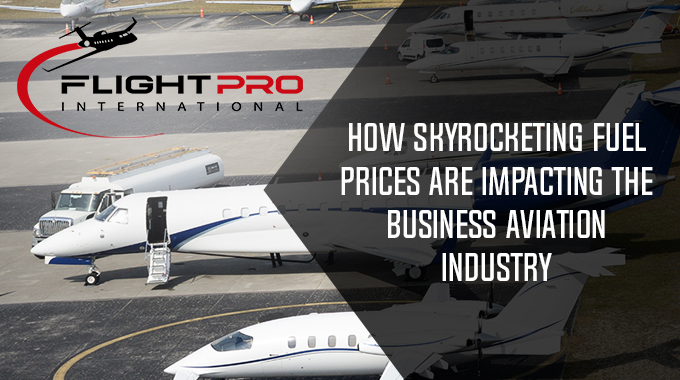With Little Choice, Businesses Are Passing Higher Costs on to Consumers
Whether your pump is down the street or at an executive airport, you can’t help but notice how fuel prices rising has gone up – a lot – in just the last month or so affecting the business aviation industry.
Thanks to high demand and a host of economic factors, fuel prices had already risen significantly from their lows during the early days of the COVID-19 pandemic lockdowns, but what happened since the start of Russia’s war with Ukraine is on an entirely different level.
So how did we get here, and what does it mean for the business aviation industry?
Why Are Fuel Prices Rising?
The price of fuel is tied to the price of oil, since fuel is made from crude oil. Fuel prices are tied to a variety of factors, including supply and demand, state and local taxes, and transportation charges.
Crude oil prices make up slightly more than half of the cost of fuel, and crude oil prices rose dramatically in the first three weeks of Russia’s war in Ukraine, in part because oil traders were concerned about possible bans on Russian oil exports.
Although the United States is not a major user of Russian crude oil, Russia is still a major oil producer globally, and any kink in the supply chain would likely have ripple effects. Plus, with sanctions on Russian oil likely to persist into the future, traders started buying oil in earnest to offset that impact, which further drove up prices.
Rising Oil Prices Spilled Over to the Business Aviation Industry
Just as they did for the fuel you put in your car, jet fuel prices have surged, too, hitting 14-year highs in the first week of March and generally only climbing since then. Prices globally were up around 30 percent in March, hitting the aviation industry just as it was coming out of two hard years of business thanks to COVID-19 lockdowns, restrictions, and dampened consumer demand for flying. In most aviation sectors, providers had little choice but to pass on high costs via fuel charges and increased costs.
These price hikes had immediate and fairly predictable impacts on the aviation industry. With consumers globally already reeling from inflationary price hikes, many sought to limit their plane trips ticket purchasing to only necessary flights. Airline capacity fell slightly in March and remains below levels reported for the same period in 2021 and 2020.
When will fuel prices come back down? Don’t hold your breath, business aviation and fuel industry experts say. As of the end of March, average crude oil prices were down about 9 percent from their early March highs, though general inflationary pressure is expected to continue for several months. Same goes for fuel prices in your car and in your plane – expect high fuel prices to last for months, not weeks.
Are you looking for solutions to high aviation fuel costs? Flight Pro International has a fuel solution for every part of the business aviation industry and works nonstop to find the best fuel prices available by sourcing from suppliers around the world. Our knowledgeable team of industry experts can support every aspect of your operations.



